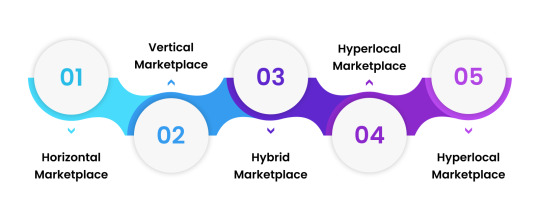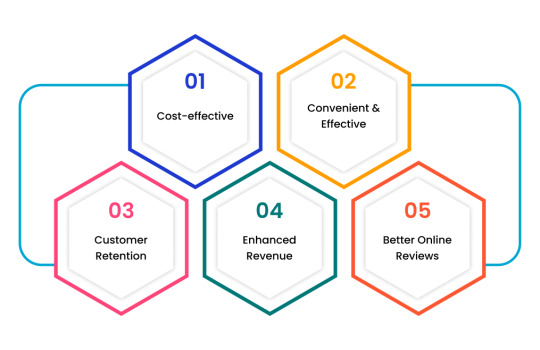#business service management software
Explore tagged Tumblr posts
Text
Exploring Career and Job Opportunities in Davao City Philippines
Davao City, recognized as one of the Philippines' most progressive cities, continues to experience remarkable economic growth, creating a vibrant job market that attracts professionals from across the country. The city's diverse economy offers numerous employment opportunities, from entry-level positions to executive roles, making it an attractive destination for job seekers at all career stages.
The Business Process Outsourcing (BPO) sector stands as one of the largest employers in Davao City, providing thousands of jobs across various specializations. Companies in this sector actively recruit customer service representatives, technical support specialists, and quality assurance analysts, offering competitive salaries and comprehensive benefits packages. The industry's continued expansion has created numerous opportunities for career advancement, with many organizations promoting from within and providing extensive training programs.
Part-time employment opportunities have also flourished in Davao City, catering to students, professionals seeking additional income, and individuals preferring flexible work arrangements. The retail sector, food service industry, and education field offer numerous part-time positions with varying schedules and responsibilities. These roles often provide valuable work experience and can serve as stepping stones to full-time careers.
The Information Technology sector in Davao has seen significant growth, with many companies seeking software developers, web designers, and IT support specialists. This growth has been fueled by the city's improving technological infrastructure and the increasing number of tech-focused businesses establishing operations in the region. Tech professionals can find opportunities in both established companies and startups, with many positions offering competitive compensation and the possibility of remote work arrangements.
Davao's hospitality and tourism industry continues to expand, creating jobs in hotels, restaurants, travel agencies, and tour operations. The sector offers positions ranging from entry-level service roles to management positions, with many employers providing training and development opportunities. The industry's growth has also sparked demand for professionals in events management and tourism marketing.
The education sector presents numerous opportunities for both full-time and part-time employment. Educational institutions regularly seek teachers, tutors, and administrative staff. The rise of online learning has created additional opportunities for English language teachers and academic consultants who can work flexible hours from home or teaching centers.
Job hiring in Davao, the digital economy has opened new avenues for employment. E-commerce specialists, digital content creators, and social media managers are in high demand as businesses increasingly establish their online presence. These positions often offer the flexibility of remote work while providing competitive compensation packages.
Professional development resources are readily available in Davao City, with numerous institutions offering skills training programs and industry certifications. Job seekers can access career counseling services, resume writing assistance, and interview coaching through various employment support organizations. These resources prove invaluable in helping candidates prepare for and secure desired positions.
The financial services sector in Davao has also experienced substantial growth, creating opportunities for banking professionals, insurance specialists, and investment consultants. These positions typically offer attractive compensation packages, including performance bonuses and health benefits, making them highly sought after by experienced professionals.
Davao's agricultural sector continues to evolve, combining traditional farming with modern agribusiness practices. This has created opportunities for agricultural technologists, food processing specialists, and supply chain professionals. The sector offers both technical and management positions, with many companies providing specialized training and development programs.
For those entering Davao's job market, proper preparation is essential. Successful job seekers typically maintain updated resumes, prepare comprehensive portfolios, and stay informed about industry developments. Professional networking, both online and offline, plays a crucial role in discovering opportunities and advancing careers in the city.
The future of Davao's job market looks promising, with emerging industries creating new employment opportunities. The city's commitment to economic development, coupled with its strategic location and robust infrastructure, continues to attract businesses and investors, ensuring a steady stream of job opportunities for qualified candidates.
Whether seeking full-time employment or part-time job in Davao City offers a diverse range of opportunities across multiple industries. Success in this dynamic job market often comes to those who combine proper preparation with continuous skill development and effective networking. As the city continues to grow and evolve, its job market remains a beacon of opportunity for professionals seeking to build meaningful careers in Mindanao's premier business hub.
#Davao City#recognized as one of the Philippines' most progressive cities#continues to experience remarkable economic growth#creating a vibrant job market that attracts professionals from across the country. The city's diverse economy offers numerous employment op#from entry-level positions to executive roles#making it an attractive destination for job seekers at all career stages.#The Business Process Outsourcing (BPO) sector stands as one of the largest employers in Davao City#providing thousands of jobs across various specializations. Companies in this sector actively recruit customer service representatives#technical support specialists#and quality assurance analysts#offering competitive salaries and comprehensive benefits packages. The industry's continued expansion has created numerous opportunities fo#with many organizations promoting from within and providing extensive training programs.#Part-time employment opportunities have also flourished in Davao City#catering to students#professionals seeking additional income#and individuals preferring flexible work arrangements. The retail sector#food service industry#and education field offer numerous part-time positions with varying schedules and responsibilities. These roles often provide valuable work#The Information Technology sector in Davao has seen significant growth#with many companies seeking software developers#web designers#and IT support specialists. This growth has been fueled by the city's improving technological infrastructure and the increasing number of t#with many positions offering competitive compensation and the possibility of remote work arrangements.#Davao's hospitality and tourism industry continues to expand#creating jobs in hotels#restaurants#travel agencies#and tour operations. The sector offers positions ranging from entry-level service roles to management positions#with many employers providing training and development opportunities. The industry's growth has also sparked demand for professionals in ev#The education sector presents numerous opportunities for both full-time and part-time employment. Educational institutions regularly seek t
4 notes
·
View notes
Text
Conduct a Marketing Skills Gap Analysis for Your Team For 2024–2025

Introduction to Marketing Skills Gap Analysis
A marketing skills gap analysis is a structured process to identify the difference between the skills your team currently has and the skills they need to achieve your organization’s goals. This analysis allows you to recognize areas where your team is excelling and areas where they may require additional training or new hires. For example, if your company’s goals involve expanding e-commerce packages, ensuring you have SEO specialists in India and proficient web design experts on the team becomes critical
Why Conduct a Skills Gap Analysis?
There are several compelling reasons to conduct a skills gap analysis:
Adapt to Industry Changes: With digital marketing, social media trends, and SEO practices evolving, a skills gap analysis helps ensure your team stays relevant. Optimize Training Investments: Focus resources on the areas that matter most to your team’s success. Enhance Team Performance: By aligning skills with objectives, your team can work more efficiently, leading to better results for your organization. Increase Employee Satisfaction: When team members feel supported in skill-building, they tend to be more engaged and motivated.
Step 1: Identify Essential Marketing Skills
The first step in any marketing skills gap analysis is to identify the skills necessary for your team to succeed. This varies depending on your company’s goals, industry trends, and the types of marketing services your organization focuses on.
1. List Core Marketing Skills
Start by listing essential skills across all major areas of digital marketing. Consider digital marketing, social media marketing, web design and development, SEO, and e-commerce strategies. Identify the technical, creative, and analytical skills each area requires. Examples of core marketing skills:
Effective SEO involves thorough keyword analysis, optimizing on-site elements, developing a solid content strategy, and leveraging analytics for continuous improvement
Social Media Marketing: Content creation, audience engagement, campaign planning, data analysis Web Design and Development: UI/UX design, coding languages, mobile optimization, site speed management E-commerce: Conversion rate optimization, product page design, funnel optimization, user behavior analysis Google My Business (GMB) Profile Management: Optimization, analytics, customer review management
2. Align Skills with Business Objectives
Identify which skills align closely with your business goals. For instance, if your goal is to increase visibility on search engines, you’ll need strong SEO skills and possibly a top SEO expert on the team. If you’re expanding into e-commerce packages, then understanding customer purchasing behavior and web development will be essential.
3. Define Future-Oriented Skills
Consider the skills that may be important in the future. For instance, as digital marketing evolves, skills in data science, AI-powered analytics, or video production might become necessary. Adding these skills to your list prepares your team for upcoming challenges.
Step 2: Assess Your Team’s Current Skills
Once you’ve identified the necessary skills, the next step is to gauge where your team currently stands in each area. This phase provides a snapshot of your team’s strengths and areas for improvement.
1. Self-assessments and Manager Evaluations
Have team members complete self-assessments to rate their proficiency in various areas. You can use tools like skills assessment questionnaires or a simple rating scale to make this process more structured. Additionally, gather input from managers who can provide an objective perspective on team capabilities.
2. Analyze Previous Performance
Review recent projects or campaigns to assess skills in action. For instance, if your team recently executed a social media marketing campaign, evaluate how effectively they managed audience engagement, content creation, and performance tracking.
3. Skills Assessment Tools
Consider using professional skills assessment tools or platforms. These tools often offer assessments specifically for digital marketing, covering skills like SEO, social media, and content marketing. Platforms like LinkedIn Learning, HubSpot Academy, and Google Analytics Academy provide courses and certification programs to help you evaluate skills more accurately.
Step 3: Analyze the Skills Gap
After collecting data on your team’s current skill levels, the next step is to compare these findings against the essential skills list. This gap analysis reveals exactly where development is needed.
1. Identify Gaps by Skill Area
Review the core skill areas — such as SEO, web design, and e-commerce — and note where there are discrepancies between current capabilities and required proficiency. For instance, if your team lacks a solid foundation in GMP Profile management or SEO specialization, these should be flagged as priority areas.
2. Prioritize Gaps Based on Impact
Not all skill gaps are equally urgent. Prioritize based on impact. For example, a deficiency in SEO experts may need immediate attention if your business relies heavily on organic traffic. Similarly, lacking social media skills could be a pressing concern if your brand’s growth relies on social media marketing.
3. Quantify the Gap
Consider assigning each gap a numerical value to quantify the extent of the skills gap. For example, a gap score of 1 might mean slight improvement is needed, while a score of 5 could indicate a significant gap requiring immediate attention.
Step 4: Create a strategy to close the gap.
Now that you know where the skill gaps lie, it’s time to develop a strategy to bridge these gaps. Your plan may involve training programs, hiring new team members, or even reorganizing responsibilities within the team.
1. Create a Training Roadmap
Design a training program that addresses the specific gaps identified. For instance, if your team needs to improve in SEO or web development, you might allocate time and resources for online courses, webinars, or workshops. Combine both face-to-face and virtual training methods to accommodate various learning preferences.
2. Invest in Relevant Tools and Resources
Consider investing in tools that can help your team grow. For instance, SEO tools like SEMrush or Ahrefs, social media management tools like Hootsuite, and web development resources are essential for building up the team’s skill set in these areas. These tools not only streamline tasks but also offer learning opportunities through built-in tutorials and analytics.
Introduction to Marketing Skills Gap Analysis
A marketing skills gap analysis is a structured process to identify the difference between the skills your team currently has and the skills they need to achieve your organization’s goals. This analysis allows you to recognize areas where your team is excelling and areas where they may require additional training or new hires. For example, if your company’s goals involve expanding e-commerce packages, ensuring you have SEO specialists and proficient web design experts on the team becomes critical.
Why Conduct a Skills Gap Analysis?
There are several compelling reasons to conduct a skills gap analysis:
Adapt to Industry Changes: With digital marketing, social media trends, and SEO practices evolving, a skills gap analysis helps ensure your team stays relevant. Optimize Training Investments: Focus resources on the areas that matter most to your team’s success. Enhance Team Performance: By aligning skills with objectives, your team can work more efficiently, leading to better results for your organization. Increase Employee Satisfaction: When team members feel supported in skill-building, they tend to be more engaged and motivated.
Step 1: Identify Essential Marketing Skills
The first step in any marketing skills gap analysis is to identify the skills necessary for your team to succeed. This varies depending on your company’s goals, industry trends, and the types of marketing services your organization focuses on.
1. List Core Marketing Skills
Start by listing essential skills across all major areas of digital marketing. Consider digital marketing, social media marketing, web design and development, SEO, and e-commerce strategies. Identify the technical, creative, and analytical skills each area requires.
Examples of core marketing skills:
Effective SEO involves thorough keyword analysis, optimizing on-site elements, developing a solid content strategy, and leveraging analytics for continuous improvement Social Media Marketing: Content creation, audience engagement, campaign planning, data analysis Web Design and Development: UI/UX design, coding languages, mobile optimization, site speed management E-commerce: Conversion rate optimization, product page design, funnel optimization, user behavior analysis Google My Business (GMB) Profile Management: Optimization, analytics, customer review management
2. Align Skills with Business Objectives
Identify which skills align closely with your business goals. For instance, if your goal is to increase visibility on search engines, you’ll need strong SEO skills and possibly a top SEO expert on the team. If you’re expanding into e-commerce packages, then understanding customer purchasing behavior and web development will be essential. 3. Define Future-Oriented Skills Think about the abilities that could be essential in the coming years. For instance, as digital marketing evolves, skills in data science, AI-powered analytics, or video production might become necessary. Adding these skills to your list prepares your team for upcoming challenges.
Step 2: Assess Your Team’s Current Skills
Once you’ve identified the necessary skills, the next step is to gauge where your team currently stands in each area. This phase provides a snapshot of your team’s strengths and areas for improvement.
1. Self-assessments and Manager Evaluations
Have team members complete self-assessments to rate their proficiency in various areas. You can use tools like skills assessment questionnaires or a simple rating scale to make this process more structured. Additionally, gather input from managers who can provide an objective perspective on team capabilities.
2. Analyze Previous Performance
Review recent projects or campaigns to assess skills in action. For instance, if your team recently executed a social media marketing campaign, evaluate how effectively they managed audience engagement, content creation, and performance tracking.
3. Skills Assessment Tools
Consider using professional skills assessment tools or platforms. These tools often offer assessments specifically for digital marketing, covering skills like SEO, social media, and content marketing. Platforms like LinkedIn Learning, HubSpot Academy, and Google Analytics Academy provide courses and certification programs to help you evaluate skills more accurately.
Step 3: Analyze the Skills Gap
After collecting data on your team’s current skill levels, the next step is to compare these findings against the essential skills list. This gap analysis reveals exactly where development is needed.
1. Identify Gaps by Skill Area
Review the core skill areas — such as SEO, web design, and e-commerce — and note where there are discrepancies between current capabilities and required proficiency. For instance, if your team lacks a solid foundation in Google My Business Management or SEO specialization, these should be flagged as priority areas.
2. Prioritize Gaps Based on Impact
Not all skill gaps are equally urgent. Prioritize based on impact. For example, a deficiency in SEO expertise may need immediate attention if your business relies heavily on organic traffic. Similarly, lacking social media skills could be a pressing concern if your brand’s growth relies on social media marketing.
3. Quantify the Gap
Consider assigning each gap a numerical value to quantify the extent of the skills gap. For example, a gap score of 1 might mean slight improvement is needed, while a score of 5 could indicate a significant gap requiring immediate attention.
Step 4: Create a strategy to close the gap.
Now that you know where the skill gaps lie, it’s time to develop a strategy to bridge these gaps. Your plan may involve training programs, hiring new team members, or even reorganizing responsibilities within the team.
1. Create a Training Roadmap
Design a training program that addresses the specific gaps identified. For instance, if your team needs to improve in SEO or web development, you might allocate time and resources for online courses, webinars, or workshops. Combine both face-to-face and virtual training methods to accommodate various learning preferences.
2. Invest in Relevant Tools and Resources
Consider investing in tools that can help your team grow. For instance, SEO tools like SEMrush or Ahrefs, social media management tools like Hootsuite, and web development resources are essential for building up the team’s skill set in these areas. These tools not only streamline tasks but also offer learning opportunities through built-in tutorials and analytics.
Conclusion
A comprehensive marketing skills gap analysis is more than just a box to check; it’s a strategic process that positions your team to meet the evolving demands of the digital landscape. By identifying skill gaps within your team, you’re ensuring that each member has the tools and knowledge needed to succeed and creating a culture of growth and improvement that directly benefits your business.
#seo services#seo business#seo packages#digital marketing#search engine marketing#ecommerce#seo techniques#software engineering#digital marketing services#web development#Digital marketing agency#Social media services#SMO packages#web hosting plans#PPC management
2 notes
·
View notes
Text
Best Business Software Tools in 2024
The right software tools can help increase productivity, draft operations more efficiently and promote company growth in today's high-paced business environment. Whether you are a start-up or an existing enterprise the following business software is necessary to improve different areas of your business.
1. Project Management: ClickUp

It is a feature-laden project manager that lets you handle tasks, projects, and workflows of all types. Its ease of use and user-friendly interface, complimented with diverse dashboards cater to audiences between small teams and large organizations. Task assignments, time tracking, goal setting, and collaboration options allow you to stop hopping between spreadsheets and emails so your projects are complete efficiently.
2. CRM–– Zoho CRM
Zoho CRM — Your Intelligent Customer Relationships Management System. Among other features, it has lead management, sales automation, and analytics to make sales performance improve on a consistent streamline both administrative aspect as well as customer satisfaction. Due to its integration capabilities with other Zoho products, as well as most third-party applications, It has become a flexible option for businesses that are ready to supercharge their customer relationship management.
3. Accounting: Zoho Books

Zoho Books- The Best Accounting Software for Business Owners Invoicing, expense tracking and financial reporting are some of its features. You can also rest assured that your taxes are being handled correctly and always have the latest view of your financial health to help you manage your finances better.
4. HR Management: monday. com HR
It is a complete human resources management software that helps companies to better structure their workforce. This system provides with facilities like employee on boarding, performance tracking, payroll management etc. With the platform's ease of use, UI simplicity, and automation capabilities in HR processes that would otherwise take hours away from key HR initiatives.
5. Payroll: OnPay

OnPay is an excellent payroll software for businesses of all sizes. It is a cloud payroll software for businesses that ensures complete compliance and automation of top-class payroll calculations, tax filings & employee payments. Additionally, OnPay provides HR and benefits management tools, effectively providing a full-fledged employee pay management solution.
6. Point-of-Sale (POS): eHopper
Versatile Point of Sale Software for Businesses Up To Mid-Sized It offers services like Inventory management, sales tracking and customer management. This makes eHopper a perfect choice for businesses that intend to simplify their sales operations using an affordable and intuitive POS system.
7. Inventory Management: Cin7

While there are plenty of other inventory management systems available, Cin7 stands out as one of the most popular options for small to mid-size businesses (SMBs) looking to get their stock levels, orders and supply chain operations under control. These functionalities consist of real-time inventory monitoring, order processing and e-commerce platform integration. With the powerful feature set of Cin7, businesses can keep inventory at an optimal level and fulfill customer demands to the hilt.
8. Website Builder: Weebly
Weebly is the website builder that you can also use to build your site or blog. It has lots of customizable templates, drag-and-drop functionality, and e-commerce ready to go. With Weebly, you can create a professional website even if you are a tech noob and give your business the relevant online visibility it needs.
9. Recruiting: ZipRecruiter

ZipRecruiter: Popular rated job search app for businesses on board. They provide hiring solutions through features like job posting candidates filtering and tracking the application. AI-powered matching from ZipRecruiter surfaces more relevant candidates to businesses faster.
10. VPN: NordVPN
It is a secure, encrypted VPN application that will make sure that you and your business stay safe as you work with the web. It provides features of encrypted connections, threat protection and global server access as well. In this way, It guarantees secure data in companies and privacy on internet.
Conclusion
The business software tools a company uses are very important to increase productivity and power growth. The above-mentioned tools are some of the best & flexible according to the fact which can assist businesses for any sized groups and help them attain their desired objectives. Implementing these tools in your operations can also help speed up processes and lead to higher customer satisfaction, as well as allow you to be on top of the competition.
#business#business growth#innovation#startup#entrepreneur#100 days of productivity#project management#sales#payroll#hr management#hr software#hr services#ai#artificial intelligence#technology#tech#techinnovation
2 notes
·
View notes
Text
KGT Applications offers tailored business solutions. We design custom tools to automate tax processes, streamline operations and enhance efficiency to ensure tax compliance and business growth. With a comprehensive suite of enterprise software, businesses can optimize their processes and reach their maximum potential. Contact KGT Applications today!
#tax services#sap consulting services#business automation#business solutions#process management#Enterprise software
3 notes
·
View notes
Text
#restaurant tips#restaurant business#restaurant design#restaurant marketing#restaurant software#restaurant management software#restaurant sales#restaurant solutions#restaurant success#horeca#hospitality#hospitalitytrends#hospitalitybusiness#music for business#music streaming#music playlist#background music#music for cafes#customer service#restaurant trends#restaurant services
3 notes
·
View notes
Text
Odoo is a powerful, open-source business management software suite that offers various applications for various business needs, including customer relationship management (CRM), e-commerce, accounting, inventory management, and more. As a business owner or decision-maker, understanding the Odoo developer cost per hour is crucial for budgeting and ensuring the success of your projects.
Learn More: - https://www.inwizards.com/blog/how-much-does-odoo-developer-cost-per-hour/
Get a free quote on your Odoo development project today!
#odoo development services#odoo development company#odoo erp solutions#odoo application development#odoo developers#odoo services#Odoo developer cost per hour#Odoo developer cost#inwizards software technology#odoo#odooerp#Business Management Software
2 notes
·
View notes
Text
Lift & Elevator Service Maintenance Software - Service CRM
Elevator and lift maintenance can be a challenging and time-consuming task, but with the help of Lift & Elevator Service Maintenance Software, it can become much easier and streamlined. This powerful software allows service teams to manage maintenance schedules, track equipment performance, and quickly diagnose and fix issues. Partnered with Service CRM, the software becomes even more valuable by providing a complete solution for managing maintenance service requests, parts ordering, and customer communications. With these tools at our disposal, we can ensure that elevators and lifts remain in top operating condition, providing reliable and safe service for all who use them.

#Lift Service Maintenance Software#Elevator Lift Maintenance Software#Elevator Maintenance Business Software#Elevator Contractor Management Software#Lifts maintenance management software#Lift Escalator AMC maintenance Software#Elevator Service Software#CRM for Elevator Company#Elevator Maintenance Service Software#Lift Escalators Service Maintenance App#Service CRM
2 notes
·
View notes
Text
How to Start a Courier Business and Build Your Own Courier Empire
Starting a courier business can be a fulfilling venture, especially in today's fast-paced world where the demand for efficient delivery services is constantly growing. To embark on this journey, you need a solid plan and the right tools to ensure success. One crucial aspect is selecting the best delivery management software that will streamline your operations and enhance customer satisfaction.
Investing in reliable delivery management software is vital for optimizing your courier business. This software will assist you in managing orders, tracking deliveries, and organizing routes efficiently. By utilizing a robust courier delivery software, you can automate various processes, such as order dispatch, driver assignment, and real-time tracking.
By mastering the art of delivering happiness and utilizing the best delivery management software, you can establish and expand your courier empire. Remember, delivering exceptional service is key to building a loyal customer base and gaining a competitive edge in the industry. So, start your courier business today and revolutionize the way packages are delivered.
#Courier business startup#Parcel delivery business#Starting a courier company#Courier service ideas#Small business logistics#LastMileDelivery#Package delivery solutions#Delivery tracking software#Route planning and optimization#Proof of delivery#Business operations management
6 notes
·
View notes
Text
#retail pos solutions#erp for retail business#cloud retail erp software#retail pos software#retail pos system software#cloud it solutions#cloud based erp solutions#erp software solutions#business software solutions#software solutions company#Field Service Management Solution#erp for small business#cloud erp#erp implementation#erpcompany#erpdevelopment#canada#erpsolutions#sap erp#erp#erp software
2 notes
·
View notes
Text
Key Benefits Of Online Marketplace Solutions For Business In 2023

Online marketplaces are where the interaction between consumers and businesses becomes more feasible. In recent years, if businesses want to reach millions of business customers and increase their revenue, it is crucial for them to come to opt for online marketplace solutions.
It is a platform that can be an app or a website, that acts as a mediator between customers and companies offering services and products in the B2b and B2C.
There are a lot of business players who are thriving in the business world using marketplaces. Some of the giant players are Amazon, Alibaba, and more.
Curious to know how big the online marketplace industry is? Why is the online marketplace industry growing so fast?
Here are a few stats that you must know. • By 2024, the B2C marketplace is estimated to reach $3.5 trillion in sales. • 47% of digital purchases happen via online marketplace platforms. • 63% of all U.S. businesses are performed via marketplaces. • The sales rate of the top 50 marketplaces in the U.S. increased by 40%, in 2020.
Types of Online Marketplace Solutions you should know in 2023 Let us now discuss the types of Online Marketplace solutions you must know.

Horizontal marketplace: Horizontal marketplace is a one-shop stop for the customers. These customers do not have to move to different online portals to buy various products. They get everything in one place.
Vertical marketplace: Vertical marketplace offers different products with similar characteristics. For example, TrueFacet sells only jewelry-related products. In addition, the vertical marketplace does maintain guaranteed authenticity.
Hybrid marketplaces: Hybrid marketplace sells their own products as well as products from other vendors while providing a platform for users to complete the transaction.
Hyperlocal marketplace: Hyperlocal marketplace is also known as the local business marketplace. In this platform, sellers deliver in a small area or local area in a short period.
Global Marketplace: As the name suggests, the global marketplace sells a variety of products from different suppliers. The best example of a global marketplace is eBay.
What are the benefits of creating an Online Marketplace? Here are a few benefits of creating an online market platform:

Let us discuss all the benefits in detail.
Cost-effective: Setting up an online store or registering the business on an online marketplace helps you save a lot of money. And you can focus more time, attention, and resources on the other important aspect of the business.
Convenient and Effective: Online marketplace is an ideal choice for managing online orders, fulfilling shipments, and proving customer services. These platforms offer convenient ways for customers to buy products.
Customer Retention: If an online marketplace caters to customers' needs, they tend to come back again and again. In simple words, clients rely a lot on the transparency and reliability of the platforms and come back accordingly.
Enhanced Revenue: A great customer experience helps increase sales and revenue. Moreover, online marketplaces make it easy for businesses to reach a higher audience. Furthermore, when you create an online marketplace, buyers, and shoppers across the globe get access to your products and services.
Better Online Reviews: Ensure that you present your best products on the online marketplace, as a good customer experience helps businesses get positive reviews. These reviews determine the future of your sales. Good reviews from customers can help you get more sales as customers tend to buy the products which hold positive reviews.
To Summarize “Marketplace has become the future of online businesses.” Customers and businesses look for a reliable and convenient place where they can buy and sell things simultaneously. And this is where online marketplaces come in. Marketplace platforms can cater to any niche and address any need of customers and sellers and are the best ways to promote the brand and enhance revenue.
At jiWebTech, we help you develop advanced, versatile, feature-rich, comprehensive, efficient, and customizable online marketplace solutions for all sizes of businesses.
If you have any queries regarding how to start an online marketplace website or want to hire marketplace developers, feel free to schedule a call.

#services#Online Marketplace Solutions#business#Online Software Solutions#Customer security#Affordable Services#erp solutions#restaurant management#cloud hosting solutions
2 notes
·
View notes
Text
ERP Solutions for Real Estate Companies: Features and Benefits 🏢💡

The real estate industry is dynamic and complex, requiring efficient management of properties, finances, projects, and customer relationships. ERP solutions designed for real estate companies offer tailored features to address these needs, helping businesses stay competitive and profitable. 🌟
Here’s how ERP systems can transform real estate operations:
Key Features of ERP for Real Estate 🔧
Property Management Module 🏘️Manage property details, lease agreements, maintenance schedules, and occupancy rates with ease, ensuring real-time visibility into all assets.
Financial Management 💰Automate accounting, budgeting, and cash flow management to ensure accurate financial tracking and compliance with industry regulations.
Project Management 📋Track project progress, allocate resources, and manage timelines effectively to ensure on-time and within-budget delivery.
CRM Integration 🤝Build strong customer relationships by tracking inquiries, managing leads, and ensuring seamless communication with tenants and buyers.
Inventory & Procurement Management 📦Keep tabs on construction materials, vendor contracts, and procurement processes to reduce delays and minimize costs.
Compliance Management 📜Stay compliant with regulatory requirements by automating document management and tracking necessary approvals.
Analytics and Reporting 📊Gain insights into sales trends, occupancy rates, and financial performance with customizable dashboards and real-time analytics.
Benefits of ERP for Real Estate Companies 🎯
Streamlined Operations 🚀By integrating all core processes, ERP systems eliminate data silos and improve collaboration between departments.
Enhanced Decision-Making 🧠Real-time data and analytics provide actionable insights, enabling smarter and faster decision-making.
Cost Savings 💸Automating routine tasks and optimizing resource allocation reduce operational costs and improve ROI.
Improved Customer Experience 🌟With better lead tracking and communication tools, real estate businesses can offer personalized services and build stronger client relationships.
Scalability for Growth 📈ERP systems grow with your business, adapting to increasing portfolios, new projects, and expanding teams.
Why Choose ERP for Your Real Estate Business?
Implementing a robust ERP solution tailored for the real estate industry can drive efficiency, enhance productivity, and ensure long-term profitability. From managing properties to tracking financials, an ERP system helps you stay ahead in a competitive market. 🏢💼
Ready to transform your real estate business with ERP solutions? Visit Dynamic Netsoft to learn how our expertise in ERP for real estate can help your business thrive. 🌐🚀
0 notes
Text

What You Gain with Our ERP Software? ✔ Automated Workflow – Say goodbye to manual bottlenecks and welcome seamless process automation. ✔ Data-Driven Decisions – Advanced analytics and reporting ensure that every decision is backed by real-time insights. ✔ Multi-Device Access – Whether you're on desktop, mobile, or web, our ERP keeps you connected. ✔ Integration-Friendly – Sync effortlessly with Gmail, web applications, CRMs, accounting software, and more. ✔ Security & Compliance – Your business data is protected with the highest security protocols. . . 🔹 Why Code Regime Technologies? We don’t just code; we craft scalable, AI-powered ERP solutions that grow with your business. Our team blends innovation with industry best practices to deliver future-proof software that gives you the competitive edge. . . 📩 Let’s Build the Future of Your Business Take the first step toward digital transformation. Get a free consultation today!
#malaysiaerpcustomization#erp quality management#odoo erp#best erp software#erp system#erp solution bd#odooimplementation#odoo services#odoo development company#business#businesssolutions
0 notes
Text
Optimizing Logistics in the UAE with Cutting-Edge Software
The UAE, a global hub for trade and commerce, relies heavily on efficient logistics operations. To streamline their businesses, logistics companies in the UAE are increasingly turning to logistics software. This sophisticated technology encompasses a wide range of solutions, including freight forwarding software UAE, freight management software UAE, transportation management software UAE, and shipping logistics software UAE.
Key Benefits of Logistics Software in the UAE:
Enhanced Efficiency: Automating tasks like freight booking, rate negotiations, tracking, and invoicing significantly improves operational efficiency for freight forwarders, NVOCC companies, and 3PL providers.
Improved Visibility: Gain real-time visibility into the entire supply chain, from order placement to delivery, enabling proactive issue resolution and better customer service.
Reduced Costs: Optimize routes, minimize empty miles, and negotiate better rates with carriers through features like carrier management software and route optimization tools.
Data-Driven Decisions: Leverage data analytics to identify bottlenecks, forecast demand, and make informed decisions regarding inventory management, warehouse transportation, and international logistics.
Increased Customer Satisfaction: Provide customers with accurate ETAs, real-time shipment tracking, and transparent communication, leading to higher customer satisfaction.
Types of Logistics Software in the UAE:
Freight Forwarding ERP Software UAE: Integrated solutions that manage all aspects of freight forwarding, including air freight, sea freight (ocean freight), lcl shipping, and freight transport.
Transportation Management Systems (TMS) UAE: Software that optimizes transportation operations, including route planning, dispatch, and fleet management.
Logistics ERP Software UAE: Comprehensive solutions that integrate with various systems across the supply chain, including ERP, CRM, and WMS.
Leading Players in the UAE Logistics Software Market:
The UAE market is witnessing a growing presence of global and local logistics software companies. Some of the leading players include [mention specific companies with a presence in the UAE].
Conclusion:
Logistics software is playing a crucial role in driving efficiency and innovation within the transport and logistics industry in the UAE. By embracing these cutting-edge solutions, businesses can gain a competitive edge, improve profitability, and enhance their overall customer experience.
Disclaimer: This article is for informational purposes only and does not constitute financial or investment advice.
#logistics companies uae#freight and forwarding uae#transport and logistics uae#air freight uae#airport freight uae#business logistics uae#freight transport uae#ocean freight uae#shipping and logistics uae#freight brokering uae#freight ocean uae#lcl shipping uae#sea freight uae#transportation management uae#transport logistics uae#air shipping uae#freight forwarding service uae#transport management systems uae#shipping logistics companies uae#global transports uae#transport and logistics companies uae#warehouse transportation uae#transportation logistics companies uae#logistics software uae#transportation software uae#shipping logistics uae#supply chain operator uae#transport and logistics services uae#carrier shipper uae#transport service logistics uae
0 notes
Text
Monday.com equips businesses with the tools to develop efficient CRM systems that enhance engagement and sales performance. Its customizable nature promotes smooth collaboration within teams. Choosing Monday.com ensures businesses have CRM solutions tailored to their specific requirements.
#Monday CRM#CRM software#customer relationship management#CRM solutions#CRM platform#customer management#sales crm software#crm system monday#best CRM for small businesses#CRM tools#Sales CRM#it#it jobs#technology#tech#current events#technews#crm benefits#crm services#sierra consulting#crm#crm solution#crm integration#crm strategy#businesssolutions#automation
0 notes
Text
Essential Safety Tips for Truckers: Navigate with Confidence
Discover must-know safety tips for truckers to ensure safe and efficient journeys. From pre-trip inspections to defensive driving techniques, this guide helps truckers navigate roads with confidence. Whether you work with trucking services, freight companies, or use advanced dispatch software, these tips are essential for reducing risks and improving performance. Stay safe, compliant, and productive on the road with expert advice tailored for professional drivers.
#Safety Tips for Truckers#trucking services#freight companies#dispatch software#carrier tracking#load management#fleet management solution#tracking app#truck business#load tracking app
0 notes
Text
Efficient Real-Time Bookkeeping for Startups
all-in-one accounting automation software. one platform for bill pay, receipt capture, expense reimbursement, credit card spend management, revenue tracking, real-time reports, and continuous updating and reconciliation of QuickBooks. Get control of your financial data with Docyt. Accounting Automation Software for Businesses. For more details click here: https://docyt.com/startups/
#financial reporting software#expense management software#accounting workflow software#accounts payable automation#accounts payable automation software#accounts payable software for small business#bookkeeping services for business#bookkeeping software for accountants#bookkeeping software for accounting firms#business bookkeeping software#employee expense report
0 notes